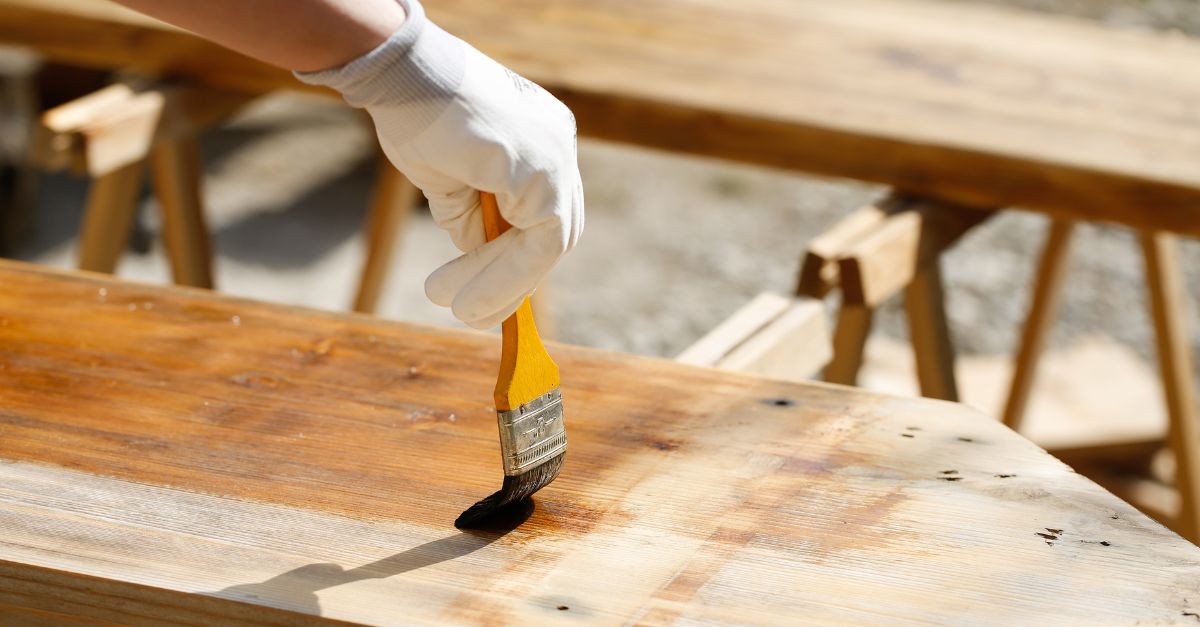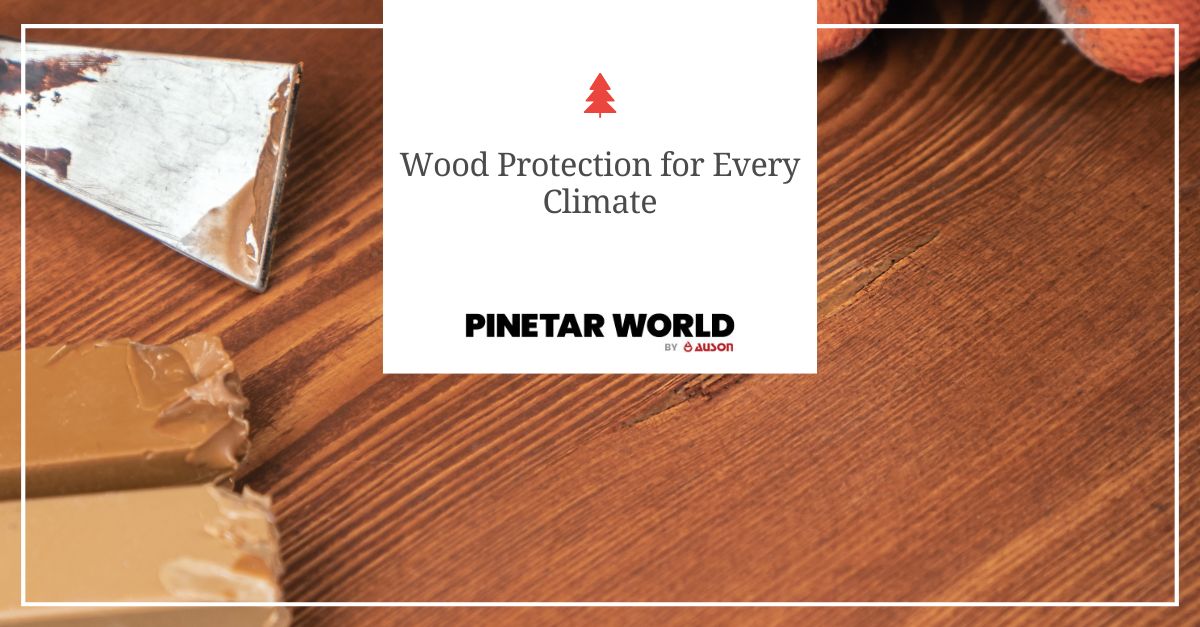Wood is a timeless building material, valued for its natural beauty and strength. However, its durability is constantly challenged by the environment. Whether you live in a humid coastal town, a dry desert, or a temperate region, the climate plays a massive role in how your wooden structures age. Without proper care, sun, moisture, and salt can lead to rot, cracking, and decay, compromising both the look and integrity of your wood. Choosing a long-lasting wood protection finish is essential for maintaining wood’s beauty and strength.
Choosing the right long-lasting wood protection finish is essential for ensuring your decks, fences, and siding last for years. This guide will walk you through the specific challenges posed by humid, dry, and coastal climates and explain how to best protect your wood in each environment. We will also explore why a pine tar wood finish is an excellent, versatile solution for maintaining wood’s health and appearance, no matter where you live.
Protecting Wood in High-Humidity Climates
High humidity is one of wood’s greatest enemies. Constant moisture in the air creates the perfect breeding ground for mold, mildew, and algae. If left unchecked, these organisms can cause discoloration, decay, and structural damage. Wood in humid areas is also prone to swelling as it absorbs moisture, which can lead to warping and splitting when it dries out.
Key Challenges:
- Fungal Growth: Mold, mildew, and algae thrive in damp conditions, leading to unsightly stains and wood rot.
- Moisture Saturation: Wood acts like a sponge, absorbing excess moisture from the air, which causes it to swell.
- Insect Infestations: Damp wood is more attractive to pests like termites and carpenter ants.
Best Protection Strategy:
For humid environments, you need a long-lasting wood protection finish that offers robust protection against moisture and fungal attacks. Pine tar is an outstanding choice because it penetrates deep into the wood grain, creating a water-repellent barrier. This impregnation prevents moisture from seeping in, which in turn inhibits the growth of mold and mildew.
Pine tar contains natural resins and terpenes that have antiseptic properties, actively combating the microorganisms that cause decay.
Application and Maintenance:
- Frequency: Reapply a pine tar wood finish every 5 to 10 years, depending on the level of exposure to rain and sun.
- Best Practice: Ensure the wood is completely dry before application. Apply a thin coat and allow it to fully absorb. In particularly damp areas, a second coat may provide extra protection.
Protecting Wood in Dry, Arid Climates
In dry, desert-like climates, the primary threat to wood is the relentless sun. Intense ultraviolet (UV) radiation breaks down lignin, the natural polymer that holds wood fibers together. This process causes the wood to lose its color, turning it a silvery-gray. More importantly, the constant cycle of heat and dryness pulls moisture out of the wood, leading to cracking, splitting, and warping.
Key Challenges:
- UV Damage: The sun’s rays bleach the wood and weaken its structure.
- Drying and Cracking: Low humidity causes wood to lose its natural moisture, making it brittle.
- Extreme Temperature Swings: Desert climates often have hot days and cold nights, causing wood to expand and contract, which can lead to stress fractures.
Best Protection Strategy:
To combat the harsh effects of a dry climate, you need a finish that provides excellent UV protection and helps the wood retain its natural oils. A pigmented pine tar wood finish is ideal because the pigment acts as a physical barrier against UV rays, similar to how sunscreen protects your skin.
Furthermore, pine tar helps to moisturize the wood, preventing it from drying out and becoming brittle. This keeps the wood flexible and less prone to cracking under stress.
Application and Maintenance:
- Frequency: A reapplication every 3 to 7 years is typically sufficient. Surfaces with direct, all-day sun exposure may need more frequent attention.
- Best Practice: Apply the finish during a cooler part of the day, like the morning or evening, to prevent it from drying too quickly. This allows for deeper penetration.
Protecting Wood in Coastal and Salty Environments
Coastal areas combine the worst of both worlds: high humidity and intense sun. On top of that, the salty air adds another layer of complexity. Salt is hygroscopic, meaning it attracts and holds onto water, which can accelerate moisture-related damage. Salt crystals can also work their way into the wood fibers, causing them to break down over time.
Key Challenges:
- Salt Corrosion: Salt-laden air and spray speed up the deterioration of wood and metal fastenings.
- Combined Moisture and UV Damage: Wood is simultaneously attacked by moisture and powerful sun, leading to rapid decay and discoloration.
- Wind and Sand Abrasion: Coastal winds can carry sand, which acts like sandpaper, wearing away at the wood’s surface and its protective finish.
Best Protection Strategy:
In a coastal environment, a durable, deeply penetrating finish is non-negotiable. A pine tar wood finish excels here because its water-repellent properties create a formidable barrier against both rain and salty sea spray. The natural resins in pine tar seal the wood, preventing salt from infiltrating and causing damage.
Choosing a pigmented pine tar will also provide the necessary UV protection to shield the wood from the intense coastal sun. Its robust formulation stands up well to the abrasive effects of wind and sand.
Application and Maintenance:
- Frequency: Coastal properties require the most frequent maintenance. Plan to inspect your wood annually and reapply a fresh coat every 2 to 5 years.
- Best Practice: Before reapplication, be sure to clean the surface thoroughly to remove any salt residue and dirt. This ensures the new coat of pine tar can bond effectively with the wood.
Your Next Step to Long-Lasting Wood
Protecting wood from the elements is a battle worth fighting, and choosing the right weapon makes all the difference. While different climates present unique challenges, a high-quality pine tar wood finish offers a versatile and effective solution across the board. By creating a breathable, water-repellent layer that also guards against UV damage, pine tar ensures your wood remains beautiful and strong for years to come.
Ready to give your wood the protection it deserves? Visit our showroom to explore our range of pine tar products. Our experts can help you select the perfect finish and provide tailored advice for your specific project and climate.


